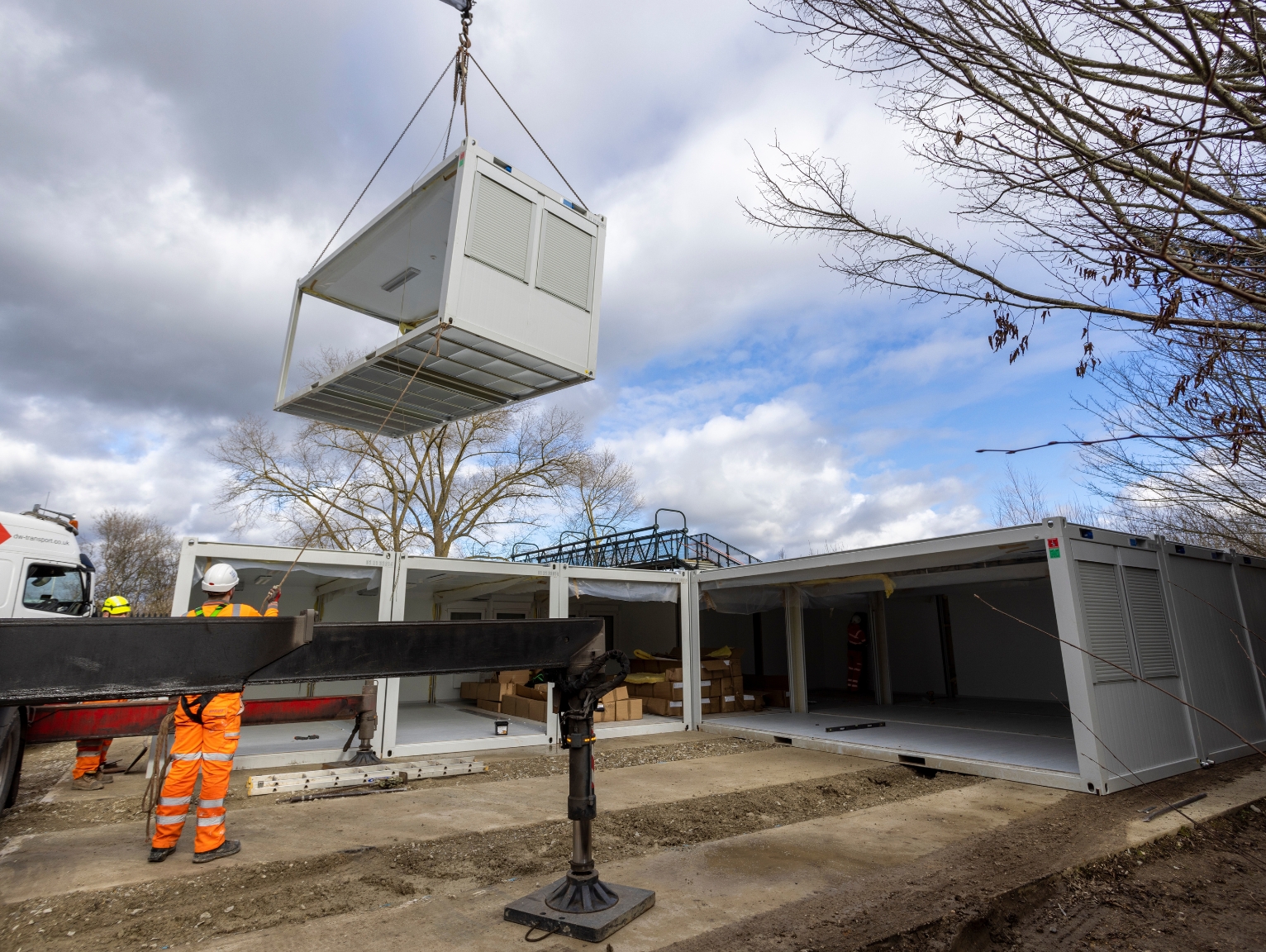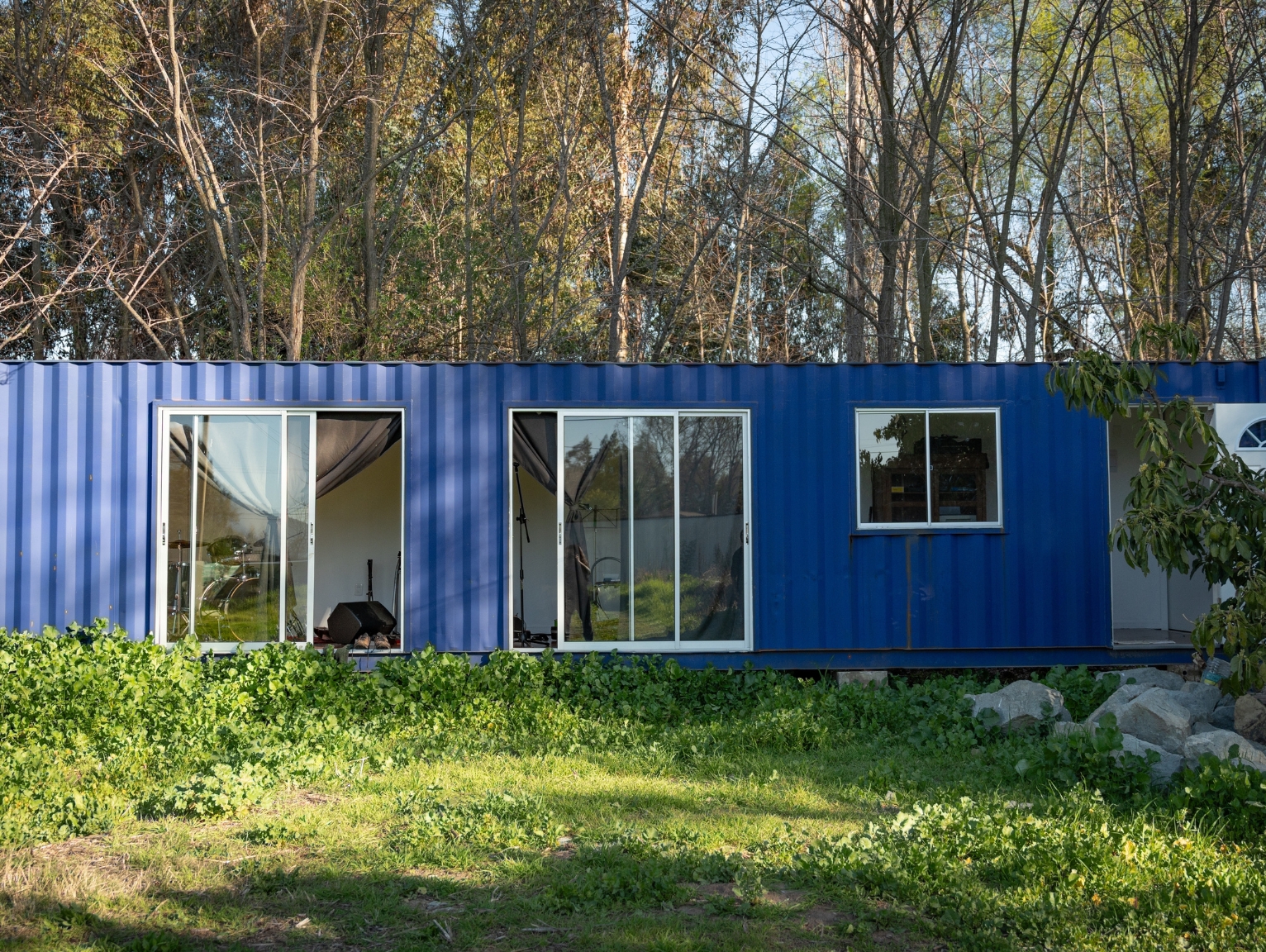Across UK cities, hotel developers are turning to shipping container construction. It’s a trend that involves upcycling shipping containers into fully-equipped hotel rooms. By reusing old steel boxes, builders create modular hotels that can be erected quickly. These projects have tended to tie in closely with city regeneration efforts by revitalising empty or underused urban sites with innovative designs. For developers in the UK, container hotels offer a fast, green alternative to traditional builds.
Modular Building with Containers
In modular hotel construction, each room is built off-site inside a container. Take the Travelodge hotel in Uxbridge, for example, which uses 86 prefabricated shipping containers. These were fully fitted with fixtures like plasterboard walls, plumbing, electrics and bathrooms before being shipped to the UK. On-site, the units were stacked and bolted together “like giant Lego blocks.”
At Bristol Airport, a 201-room Hampton by Hilton hotel also made use of shipping container modules. Each bedroom unit was built in China and shipped to the airport. The pre-made modules (including stairs and corridors) were then installed in just three weeks.

The hotel’s two wings, clad in metal panels and timber-like finishes, form an H-shaped plan. Constructing in this way greatly reduces site disruption. The units themselves are fully too, as they can be disassembled and shipped to a new site if needed. This means that, in theory, a shipping container hotel can eventually be taken down and moved elsewhere, which adds greater flexibility for developers.
Structural Design and Insulation
A key technical task is adapting the steel container for building use. Standard shipping containers have strong corner posts, but cutting windows or stacking many floors requires extra support. The containers still need proper foundations, usually in the form of concrete pads or piles, so that the hotel sits on a stable base, just like a permanent building. Engineers carefully design the connections between containers so that loads transfer safely through multi-storey stacks.
Thermal insulation for shipping containers is also vital in the UK climate.
The thin steel walls of a container conduct heat and cold; insulation inside is a must. Typically, they install rigid foam or spray foam insulation as well as plasterboard lining on walls and ceilings. Floors are often raised or lined with insulated panels as well. This creates a comfortable interior that meets UK thermal efficiency rules.
Even the container exteriors can be designed smartly. London’s Stowaway aparthotel in Waterloo is a great example here, as it used diagonal metal fins on each container façade to provide solar shading and privacy. Inside, each unit still offers full hotel amenities, including a bed, bathroom and small kitchenette. The emphasis is on the creative details, so guests enjoy a normal hotel experience even in a shipping container.
Planning, Regulations and Sustainability
Shipping container hotels need to meet the same UK planning and building codes as their traditional counterparts. Although the rooms arrive prefabricated, the overall building requires planning permission, and all designs must comply with fire safety, energy efficiency, sound insulation and accessibility rules.
Reusing containers also supports sustainability.
Recycling shipping containers means less new steel and concrete are needed. The containers already have one life at sea, so giving them a second life in construction reduces waste. In modular constructions, they can even be taken apart and reassembled elsewhere.
Looking for Used Shipping Containers For Your Next Construction Project?
If you’re working on a construction project and need a fast, flexible solution, used shipping containers could be the answer. At Philspace, we supply high-quality used containers and fully-equipped welfare units to sites across the south of England. Whether you’re managing a tight city site or working on a remote build, our containers give you a reliable, cost-effective option without compromise.
Our used sale items are ideal for temporary or long-term use. Every container is quality-checked and backed by expert support from a team that understands construction inside out. Need site accommodation or welfare units? We’ve got you covered with customisable options that arrive ready to go.
Explore our range of used containers and welfare units today, or get in touch to find out more.
FAQs
How safe and durable are container hotel rooms?
Very safe. Shipping containers are made of thick, marine-grade steel and are designed to endure harsh environments. When properly modified and maintained, they meet all UK building and fire safety standards. With routine upkeep (for example, repainting and checking seals), a container hotel can last for many decades without structural issues.
What maintenance is required for a container hotel?
Maintenance is similar to any conventional building. The metal shell should be inspected periodically for rust or damage and repainted if needed. Interior systems like plumbing, heating and electrics use standard equipment, so their upkeep follows normal hotel practice. Overall, containers are very durable, so long-term maintenance costs are comparable to a steel-frame building.
Can a container hotel be moved or expanded later?
Yes. Each hotel room module is a standalone unit. Owners can expand the hotel by adding more containers or even dismantling and relocating modules if desired. In practice, moving a hotel to a new site would require new planning permission and foundations, but the boxes themselves are reusable. This modularity adds flexibility for changing needs or future expansion.
What sizes of rooms can be made from containers?
Standard shipping containers are usually 6m (20ft) or 12m (40ft) long and about 2.4m wide. Architects can also place containers side-by-side or end-to-end to create bigger suites or communal areas.






